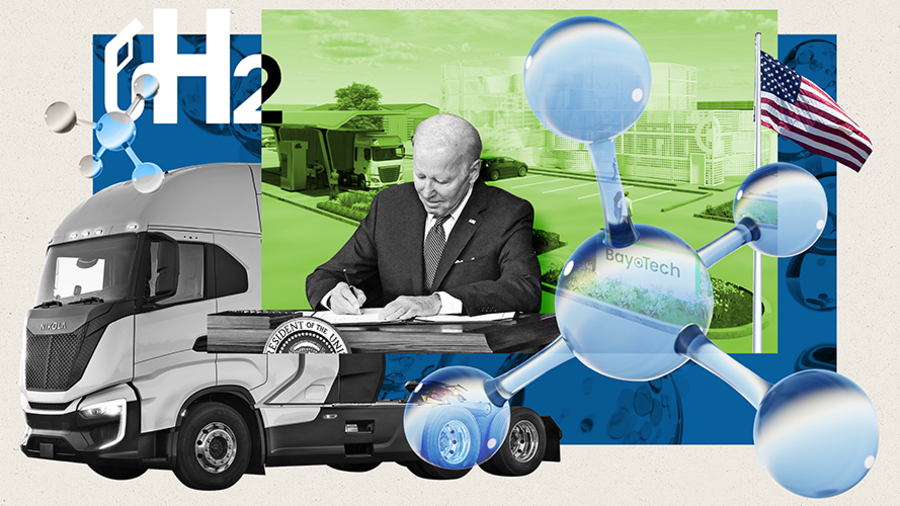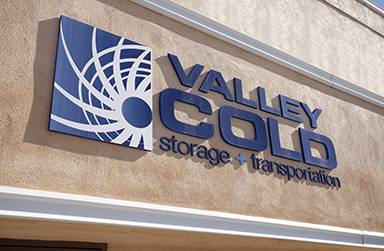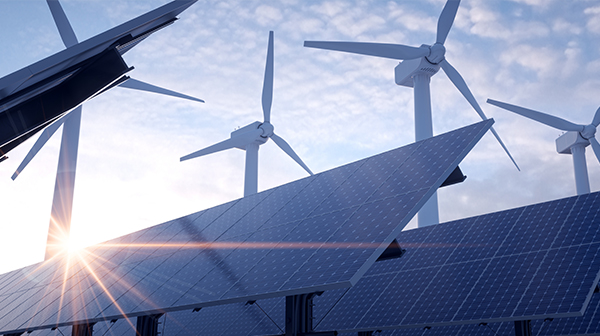
January 9th, 2023 – Coolidge, Rochester, Santa Fe. They float dark red above the city. Five huge letters at the top of an old skyscraper: Kodak. The film manufacturer was an American icon. In 1988, Eastman Kodak employed 145,000 people and commanded two-thirds of the global camera market. Headquartered in Rochester, the industrial city on Lake Ontario was getting rich off Kodak. Then came the 1990s, digital cameras and decline. In 2012, Kodak went bankrupt. Rochester fell into disrepair.
“That’s over now,” says Daniel O’Connell of Plug Power. “We are the heart that is revitalizing this region. With hydrogen.” He gives a tour of the company’s Gigafactory, which makes fuel cells, and electrolyzers, building blocks of the hydrogen economy. In one hall is a machine as big as a tour bus. It comes from Kodak, and Plug has modernized it. It used to be used for film production, but now it prints fuel cell membranes.
“Hydrogen can not only save Rochester, it can save the world. And America is now taking the lead,” O’Connell believes. He is not alone in this.
Hydrogen as an energy carrier has long been viewed skeptically in the United States. The first hydrogen cars were scrapped. Former President Donald Trump promoted the oil and gas industry. But with Joe Biden’s climate packages, the USA is coming back with a vengeance – and relying on old strengths: subsidies, inventiveness, research networks and pragmatism.
The EU, which already saw itself on the way to becoming a hydrogen pioneer, seems to be falling behind. At least that’s what a trip through the hydrogen nation USA shows.
1. Generous subsidies
Santa Fe, the capital of New Mexico at the southern tip of the Rocky Mountains, is characterized by Spanish colonial architecture, the lobby offices of the oil and gas industry – and soon by the hydrogen economy.
“We have very ambitious climate goals,” says New Mexico Environment Secretary James Kenney. “We are working on a number of green energy strategies. The most important role is wind and solar power combined with hydrogen.”
Hydrogen has been a hot topic in the U.S. since President Biden took office. The infrastructure package passed at the end of 2021 provides $9.5 billion in funding for hydrogen projects. The Inflation Reduction Act (IRA), passed this summer, includes extensive tax rebates that subsidize clean hydrogen production. Specifically, there are tax credits of three dollars per kilogram of hydrogen.
“With its plan to reduce production costs to $1.0 per kilogram by 2030 from the current $3.81, the U.S. is pursuing the most ambitious plans in the world,” judges Natalia Luna, an analyst at financial firm Columbia Threadneedle. This commitment, she says, is a “game changer.”
The situation is different in Europe. EU Commissioner Frans Timmermans promised the Handelsblatt that the Europeans would “show the Americans that we know exactly how to build a hydrogen economy. But so far, the Commission and the Parliament are arguing about what and how: when can hydrogen be classified as “green,” what individual rules are needed, what are the member states doing, what Brussels?
While the EU is discussing, the USA is acting. For example, the IRA also promotes the production of so-called “blue” hydrogen, which is extracted from natural gas in steam reformers – on the condition that the resulting greenhouse gas is captured and stored.
New Mexico believes this is the right thing to do. A technology-agnostic approach is being taken, Kenney says. “Is green hydrogen good, blue hydrogen evil? We’re not interested in that debate. We have only one goal: clean hydrogen. We ask ourselves on every project: which production process produces the least CO2 emissions?”
On board: Colorado, Utah and Wyoming. Together with New Mexico, the neighboring states want to build a “clean hydrogen hub.” “We’re pulling together,” Kenney says. German companies are cordially invited, he adds. Land would be made available without red tape and subsidies would be disbursed quickly, with low energy prices on top.
The special feature of the hydrogen alliance: Two of the states are governed democratically, two republican. Hydrogen production is no longer a political bone of contention in the USA. Even conservative Texas supports the technology. Senator Lindsey Graham, one of the most influential Republican leaders, recently praised electric cars and hydrogen, saying both “make the world a cleaner and safer place. America needs to be the leader, not the follower!”




